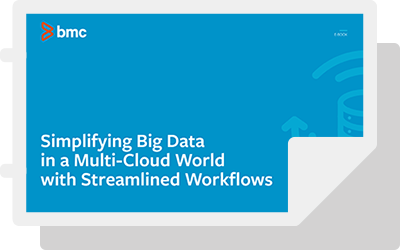
What’s the number one goal for every developer that works in today’s digital business? The answer is pretty simple: to build better business applications faster. But as I speak with IT pros from all kinds of companies at our events, I often hear, “Sure, but that’s easier said than done.”
So, what’s the biggest challenge? Silos.
Here are a few stats I believe frame up the situation well:

| According to Forrester Consulting, one-third of development and operations professionals cited silos as their top organizational challenge, due to the negative impact on delivery velocity.1 |

| Nearly half of development teams encounter quality and performance issues with code in production.2 |

| Almost half of developers say they have little knowledge of how their code performs once it’s handed over to operations.3 |
It’s clear that the traditional IT organizational structure for development and operations is broken. It’s created a communications gap between developers and IT ops professionals. All too often, developers build their applications in isolation and then submit the code via a helpdesk ticket to have operations move the code into production. Developers aren’t building code with operational challenges in mind. And IT ops has little to no foresight on what’s coming down the pipeline. This siloed approach cripples your organization’s ability to build quality applications faster. Fortunately, there’s a better way.
What’s the solution? Jobs-as-Code
Forrester Consulting defines Jobs-as-Code as handling “jobs” (batch workflow automation for business apps) the same way you manage the other components of an application (i.e. code, logic, infra, test cases, security, etc.). By building jobs in code early, all the manual and creative work is done together. The delivery pipeline can then be run through automation as the delivery pipeline is essentially stored in an SCM, where all pieces can be built and tested together automatically. This left-shifts the jobs to developers with the other application components
By modernizing current job and workload orchestration as code and integrating within existing continuous integration/continuous delivery pipeline (CI/CD) tool chains, companies can overcome silos and save time, money, and headaches in projects ranging from big data and dynamic infrastructure to multi-cloud.
Now, consider these stats:

| According to Forrester Consulting, sixty-five percent of IT decision-makers say improving IT efficiency is a top business objective.4 |

| Almost every IT decision-maker reported sees value in using Jobs-as-Code for improving their software delivery cycle.5 |

| Over eighty percent of surveyed companies have implemented Jobs-as-Code, or are planning or interested in implementing it.6 |
In the same survey above, the top benefits (achieved or expected) reported by IT decision-makers were: achieving a faster application lifecycle, reducing configuration errors, improving success rates when moving batch into production, and gaining the ability to test configuration changes before deployment7.The benefits are clear, and Jobs-as-Code adoption is on the rise.
What does it look like in action?
Here’s how BMC customers are leveraging Control-M to amp up their CI/CD pipeline
Success Story: Amadeus reinvents its operating model with dynamic infrastructure
- The challenge: For a global leader in travel services, explosive growth in transactions spurred a need for a new operational model to handle instantaneous responses and high availability, and accelerate new service and enhancement delivery.
- The solution: Amadeus leveraged Control-M to support migration to a new cloud architecture solution, using Control-M Automation API to ensure an always-on environment.
- The results:
- $37 million saved in conversion effort, based on 250,000 existing jobs
- 1,000 staff hours per year saved in a 500 FTE development organization
- $1 million access benefit per application from moving to a private cloud
Control-M is a huge part of our business because we have hundreds of thousands of jobs with thousands of those jobs running in parallel… From a development point of view, you want to treat jobs like all other software—to build, run, test, and then have continuous build, continuous integration, and continuous delivery of your jobs.
— Alice Albano, Software Engineer, Amadeus
You’ve got a partner

Our Control-M experts are ready to help you leverage Jobs-as-Code to improve timelines, avoid delays, save staff hours, and increase quality. Click here to learn how BMC can help you amplify your CI/CD delivery pipeline.
Want to learn more about Jobs-as-Code? Check out our latest interactive infographic!
References:
1 Forrester, Making Business Workflows First-Class Citizens in the Modern Software Delivery Life Cycle, October 2017↩
2 Forrester, Making Business Workflows First-Class Citizens in the Modern Software Delivery Life Cycle, October 2017↩
3 Forrester, Making Business Workflows First-Class Citizens in the Modern Software Delivery Life Cycle, October 2017↩
4 Forrester, Efficient IT Operations Require Workload Automation, June 2016↩
5 Forrester, Making Business Workflows First-Class Citizens in the Modern Software Delivery Life Cycle, October 2017↩
6 Forrester, Making Business Workflows First-Class Citizens in the Modern Software Delivery Life Cycle, October 2017↩
7 Forrester, Making Business Workflows First-Class Citizens in the Modern Software Delivery Life Cycle, October 2017↩







